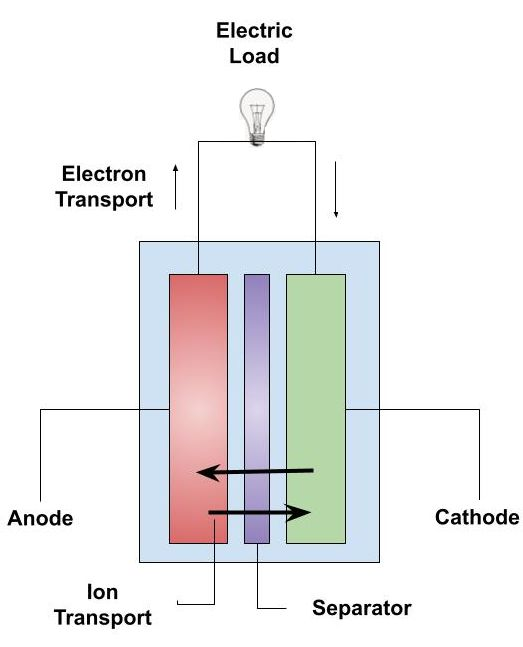Current efficiency is a measure that indicates the effectiveness with which electric current is used in an electrochemical reaction, particularly in the context of electrolytic cells, including those in li-ion batteries. It is usually expressed as a percentage. The higher the percentage, the more efficient the electrode is at facilitating the desired chemical reaction.
In an ideal scenario, every electron that flows through a battery contributes directly to the primary electrochemical reaction, which, in the case of li-ion batteries, is the intercalation and deintercalation of li ions. In practice, current efficiency is often less than 100%. This inefficiency arises due to several factors:
Undesired Reactions: Sometimes, reactions other than the intended primary reaction occur at the electrodes. These can include the formation of unwanted chemical compounds or the degradation of electrolyte materials.
Side Reactions: These are reactions that consume the product of the primary reaction or compete with it. In li-ion batteries, side reactions can lead to the consumption of li ions, reducing the battery's capacity over time.
Electrode Material and Design: The choice of electrode material and its structural design significantly impact the current efficiency. Materials that facilitate faster & more complete reactions can improve efficiency.
To gauge current efficiency, we compare the theoretical current production of the desired product with the actual production. This comparison can reveal much about a battery's performance. For instance, a significant discrepancy can indicate high inefficiency, which could be due to a range of issues like poor electrode material, ineffective design, or problematic electrolyte composition.
Why is Current Efficiency Important?
Battery Capacity and Lifespan: Higher current efficiency means that more of the electric current contributes to the charging & discharging cycles, enhancing the battery's capacity and prolonging its lifespan.
Energy Efficiency: Batteries with higher current efficiency are more energy-efficient, reducing energy loss during operation.
Safety and Stability: Reducing side reactions through improved current efficiency can also enhance the battery's safety and stability, as some side reactions can lead to hazardous conditions.
Cost-Effectiveness: Enhancing efficiency can reduce the cost per unit of energy stored or released, making li-ion batteries more economically viable for various applications.
The measurement of current efficiency in li-ion batteries serves a dual purpose, pivotal both from a technological and consumer standpoint. On one hand, it is instrumental in refining the inherent cell design, contributing to the development of more efficient and reliable batteries. On the other hand, this measurement directly impacts the end-users, the customers, by influencing the operating economics of the batteries they use.

